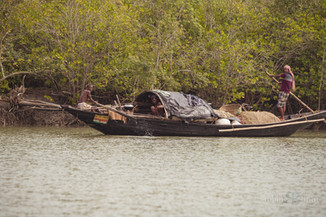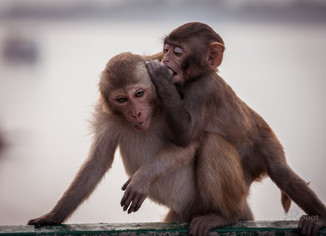India Part 3: Sundarbans
- robinbootphotography
- Mar 30, 2016
- 4 min read
Over a month has passed since I got back from India so it's about time I posted the last batch of snaps! If you haven't seen the first 2 blog instalments from my trip, it's not too late (check them out in the blog menu)!

We left Kaziranga and after a 4 1/2 hour taxi ride, a 2 hour flight, another 3 hour taxi and then an hour and half on a boat, we finally arrived on Bali island in Sundarbans National Park. The Sundarbans is a vast mangrove forest, covering about 10,000 square kilometres. It is a UNESCO world heritage site, the majority of which lies in Bangladesh. We visited the small (in relative terms) chunk of the National Park in the Indian State of West Bengal (after flying into Kolkata).
The landscape and overall experience was very different from Assam (East India). The National Park lies on a vast delta into which many rivers flow, most notably the Ganges. We had 3 days to explore the rich biodiversity of the forest by boat as well as meeting the local people and being given a taste of their island tradition. This is what I captured through my lens:
Bali Island

Not to be confused with the Indonesian island, Bali is an island in the North of the Sundarban delta. After a lot of travelling, we received a very warm welcome from the staff at Tora Eco Resort which seemed quite luxurious for the remote location (electricity was provided at night via generator). The food was exquisite and profits go into projects that help the local villagers so I definitely recommend checking the place out if you intend visiting. The 3 days we spent in the Sundarbans were geared around wildlife (see below) but on our last evening we went for a wander through the nearby village where the locals were more than happy to pose for a few photos. Our stay coincided with the festival of Bonbibi, giving us the opportunity to watch some local amateur dramatics which portrayed the traditional story of Bonbibi, the forest Goddess, and how she protected the Sundarban honey-collectors from an evil tiger...
(click images below to enlarge)
On the Water

Everything in the Sundarbans revolves around the vast network of brackish waterways which are used for fishing (and shrimping), tourism, as a trade route to Bangladesh and for generally getting around. All of our exploration through the tidal mangrove forests was done on a boat similar to the large blue ones in the last photo below...
(click images below to enlarge)
Birds

This third and final leg of the trip was a it of a mixed experience. We had just come from Kaziranga which was so brimming with animal activity that we almost took it for granted - everywhere you looked there was something flitting about in the trees or long grass. The Sundarbans was quite different and we would often go for half an hour without seeing any animals at all (I imagine a lot of the wildlife preferred to stay in the denser, inaccessible areas of the of forest) - this wasn't helped by the low visibility in the misty mornings. Despite the infrequency of sightings, we were really spoilt by the glimpses we got. Two of my favourite birds are ospreys and kingfishers. Until now, I had only ever seen an osprey from a distance and never had the opportunity to photograph them but we were able to get fairly close to one perched in a tree on our second day - definitely worth the wait!
(click images below to enlarge)
As for kingfishers, my tally for different species in India has now reached seven (common, pied, stork-billed, white-breasted, brown-winged, collared, black-capped)!! The highlight was actually at 6.30am on the final morning before departure where 2 male kingfishers were fighting over territory... and it just so happened that the territory was the pond right outside my front door!! The light was low and the little chaps were darting around quickly, making for shots that were a tad grainy... but what an experience all the same.

(Some of the pics below aren't the highest quality due to the distance but I decided to include them anyway.)
(click images below to enlarge)
Other birding highlights included little green bee-eaters, a family of barn owls (actually nesting in the eco camp!), hoopoes, a greater flame-back woodpecker and raptors like a short-toed eagle, a shikra and marsh harrier...
(click images below to enlarge)
Other Wildlife
The Sundarbans National Park is a tremendous example of biodiversity. Although the tigers proved elusive yet again, some of the other creatures on the banks were a bit different from ones you might spot on an average Thames riverboat trip! These included crocodiles, humongous water monitor lizards, red fiddler crabs and a lot more macaques...
(click images below to enlarge)
There you go - my Indian adventure has come to an end but the memories (and photos) will stay with me for a long time. I hope you've enjoyed the blog and please feel free to comment and share on social media. 11 days in India simply wasn't enough and I would love to go back with a bit more time and visit other regions... and maybe even see one of those bloody tigers that everyone keeps going on about! I booked this trip through Responsible Travel and India Footprints Adventure - they were able to tailor all the itinerary and internal travel to our requirements and I would definitely recommend checking them out if you're planning a similar trip.
As per usual, all my images above are available for purchase - you can get in touch via email: info@robinboot.com
More blogs coming soon.
See you next time,
Robin















































































































Comments